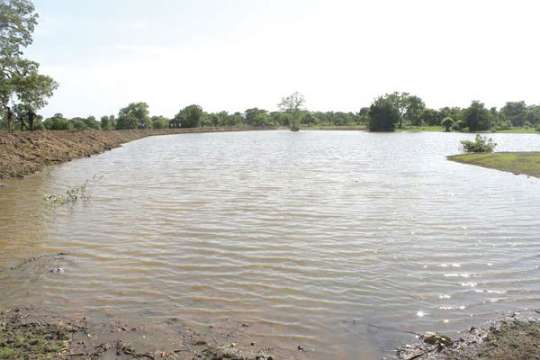Water for irrigation and agriculture activities at the Dawhenya Irrigation Facility is believed to have been heavily polluted – posing serious challenges to greenhouse and controlled environment farming within the enclave.
Deputy Director of Agri Impact – an agribusiness consulting firm, Juliana Asante Dartey, who spoke to B&FT said the situation is affecting farming in the area as treatment for the water by individual farmers is very expensive.
“Our checks have revealed that the water is heavily polluted with microorganisms including fungi, bacteria and others. Treating the water is expensive, and it is causing a financial drain on the several greenhouse farming companies in this enclave,” she said.
The phenomenon, she said, is increasing the cost of production as farmers have to regularly change filters, fix UV bulbs among other tools to kill organisms and microbes through radiation.
Home to the cultivation of rice, vegetables, flowers and fish-farming among others, the 980-hectare Dawhenya Irrigation Scheme enclave in the Ningo Prampram district of the Greater Accra Region has West Africa’s largest combined greenhouse and open field farming facility.
The dam is under the auspices of the Ghana Irrigation Authority (GIDA, and was developed by the State Farms Corporation in 1959 with the sole aim of producing vegetables for the Accra-Tema metropolitan area.
However, the dam’s current inability to support greenhouse and controlled environment farming due to pollution has become a source of worry for stakeholders and farmers in the area.
“Sometimes, contamination can also be from the soil in the enclave or the environment in general; but our checks at Agri Impact have also suggested that the dam itself is heavily polluted,” Madam Dartey indicated.
When the B&FT contacted Samuel Duwuona Tetteh, Scheme Manager of the Dawhenya Irrigation Scheme, he explained management’s attention has not been drawn to the dam’s contamination by farmers in the area.
“More than 90 percent of the area is used for rice cultivation and the rest for vegetables and fruit. Fruit and vegetables are vulnerable in such situations. The allegations may be true, but the Scheme will do its verification to establish the facts and take action,” Mr. Tetteh noted.
Government, through the National Entrepreneurship and Innovation Programme (NEIP) Green House Estate Project, in the past few years instituted West Africa’s biggest greenhouse project at the Dawhenya Irrigation Scheme.
The project aims to install almost 1,000 greenhouses and an entrepreneurship and innovation centre for training human resources.
About 75 greenhouses have been completed and commissioned, and are estimated to have a capacity to produce 4,500 tonnes of vegetables valued at US$2million annually.










